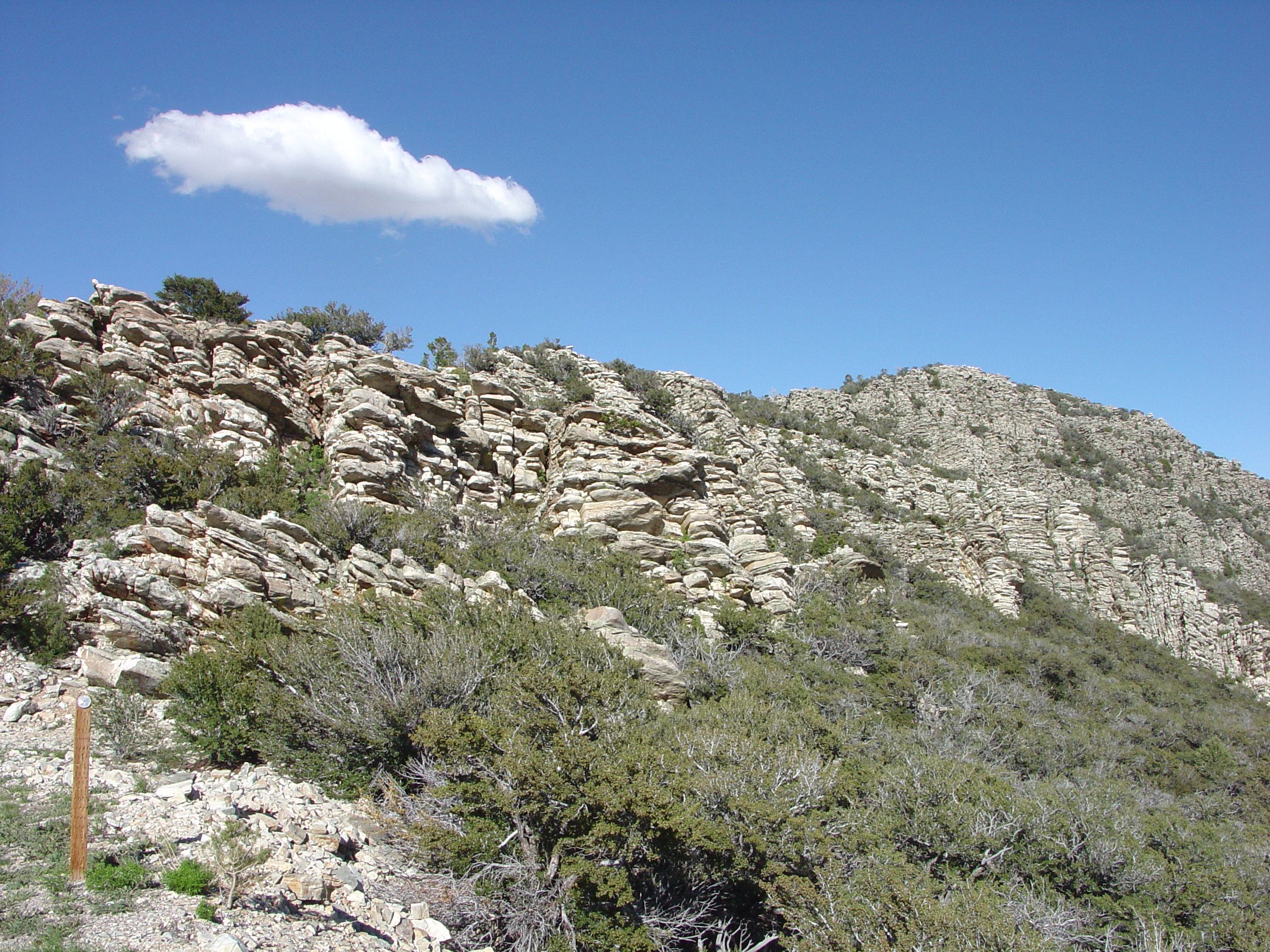| Much of the Snake Range consists of gently to steeply dipping sedimentary rocks. Sedimentary rock formations exposed in the core of the Snake Range measure about 14,000 feet thick. These rocks formed from sediments deposited during the Cambrian Period (between 488-542 million years ago) in a shallow marine shelf basin setting along what was at one time along the margin of the North American continent. These rocks went through several stages of mountain-building periods (orogenies) that caused the rocks to be partially to intensely metamorphosed. This mountainside along the Wheeler Peak Scenic Drive is part of an extensive belt of quartzite. Quartzite forms from sandstone and (or) quartz-rich volcanic ash that has been subjected to heat and pressure. Quartzite is extremely resistant to erosional forces compared with other rocks. Quartzite occurs throughout the high-peaks region of the Snake Range in Great Basin National Park (Dewes and Palmer, 1957; Harris and others, 1997). |

